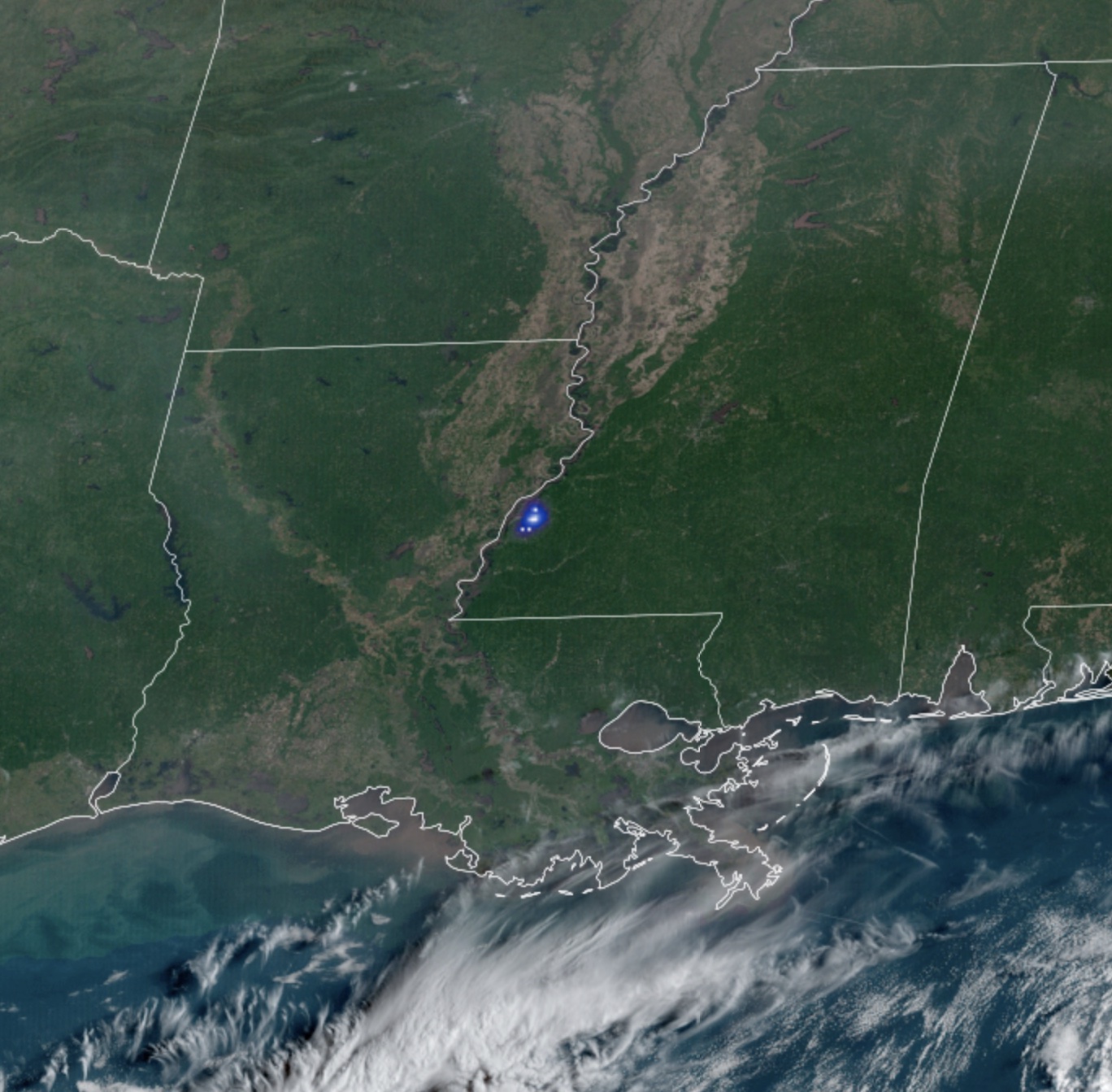
A fireball 10 times brighter than the moon streaked across the skies over Arkansas, Louisiana and Misssippi early Wednesday (April 27), creating a loud boom and treating dozens of people to a dazzling light show, according to NASA.
The blazing meteor was first spied by onlookers around 8:03 a.m. CDT streaking above the Mississippi River, not far from the town of Alcorn, Mississippi. The meteor's breakup triggered several sonic booms and vibrations that struck with the force of 3 tons of TNT, according to a NASA blog post.
One resident of Vicksburg, Mississippi, said she spotted an "orange fireball the size of a basketball, with a white tail behind it," The Vicksburg Post reported.
People on Earth weren't the only ones treated to a light show. Around the same time, the Geostationary Light Mapper (GLM) onboard two National Oceanic and Atmospheric Administration satellites detected several brilliant flashes as the space rock broke up in the atmosphere.

"This is one of the nicer events I have seen in the GLM data," Bill Cooke, lead of NASA's Meteoroid Environments Office at Marshall Space Flight Center in Huntsville, Alabama, said in the NASA blog post.
The fireball was spawned by a hunk of asteroid that was about 3.3 feet (1 meter) in diameter and weighed about 90 pounds (40 kilograms), according to NASA. It was traveling at 55,000 mph (34,175 km/h) as it entered Earth's atmosphere, and then broke up into several smaller pieces before completely disintegrating over the swamps near Minorca, Louisiana, according to NASA.
Fireballs are stunningly bright meteors that shine with a light brighter than Venus, according to the American Meteor Society. This fireball was also a bolide, meaning it was not only brilliant, but it also sported a tail that exploded in a bright flash of light.
Get the world’s most fascinating discoveries delivered straight to your inbox.
More than 30 people spotted the fireball, ABC News reported.
Originally published on Live Science.

Tia is the editor-in-chief (premium) and was formerly managing editor and senior writer for Live Science. Her work has appeared in Scientific American, Wired.com, Science News and other outlets. She holds a master's degree in bioengineering from the University of Washington, a graduate certificate in science writing from UC Santa Cruz and a bachelor's degree in mechanical engineering from the University of Texas at Austin. Tia was part of a team at the Milwaukee Journal Sentinel that published the Empty Cradles series on preterm births, which won multiple awards, including the 2012 Casey Medal for Meritorious Journalism.


